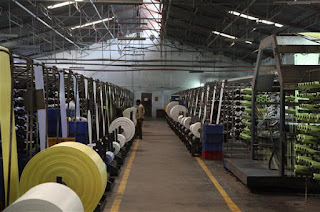Coated vs Uncoated Bulk Bags
Uncoated Bulk Bags
Coated Bulk Bags Flexible Intermediate Bulk Containers are
typically constructed by weaving together strands of polypropylene. Because of
the weave-based construction, materials that are very fine may seep through the
weave or sew lines. Examples of these products include fine sands or powders.
If you’re packing a powder in an uncoated bag and you hit
the side of a full bag, you will likely see a cloud of product leave the bag.
The weave of an uncoated bag also allows air and moisture to more easily pass
through the woven polypropylene to the product you’re packing.
Common uses for uncoated bags:
·
For transporting/storing specific types of food
grade and non-food grade products.
·
For
transporting/sorting any product that is granular and is the size of grains of
rice or larger such a beans, grain, mulch, and seed.
·
Transporting products/goods that need to
breathe.
Coated Bulk Bags
A “coated” bag is constructed similarly to an uncoated bag.
Before the bag is sewn together, an additional polypropylene film is added to
the bag’s fabric sealing the small gaps in the poly weaves. This film can be
added to the inside or outside of the bag.
Applying the film to
the inside of the bag is the most common because it can keep products like
powders from getting stuck in the weave when discharged. The coating can be
difficult to detect if you’re not very familiar with flexible intermediate bulk
containers. The easiest way to tell if a fabric is coated is to press the weave
together to see if it spreads apart. Make sure to test both the outside and
inside of the bag. If the weave does not spread apart, there’s a good chance
the bag is coated.
One of the benefits of a coated bag is the additional
protection it offers the materials being stored and/or transported. Flexible
intermediate bulk containers can be found in warehouses, construction sites,
and manufacturing facilities. These are environments where outside contaminants
like dust, moisture, and dirt can be a factor. The coating on a bag can provide
a moisture barrier and an added layer of protection. If you are packing a
powder and strike the side of the bag when it’s full, you will not likely see a
cloud of product exit the bag. Coated bags are very useful when packing small
granular or powdered product.
Common uses for coated bags:
·
When a barrier from water/moisture is needed.
·
When
you’re transporting dry flow able products in powder, crystal, granule or flake
form such as cement, detergents, flour, salt, fine minerals such as carbon
black, sand and sugar that need moisture protection



Comments
Post a Comment